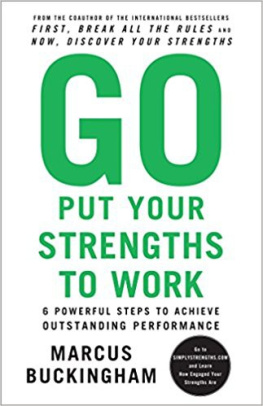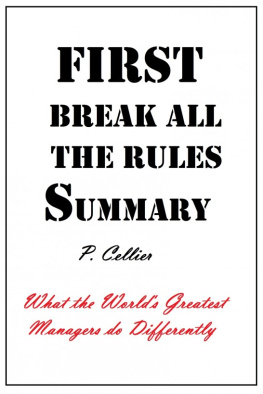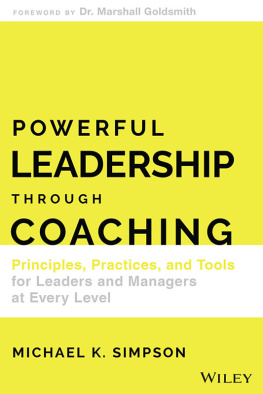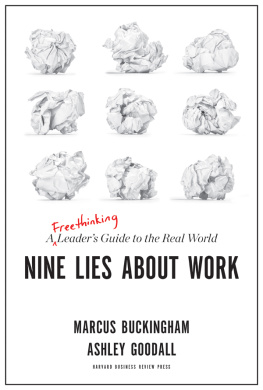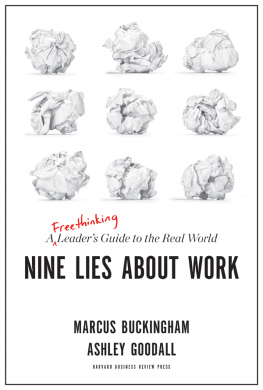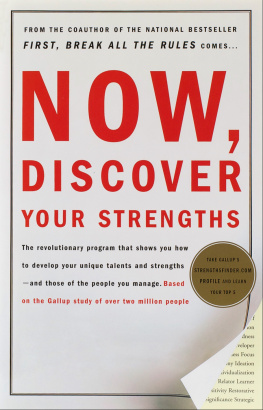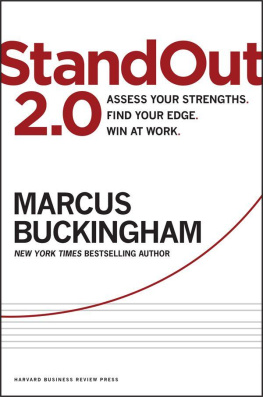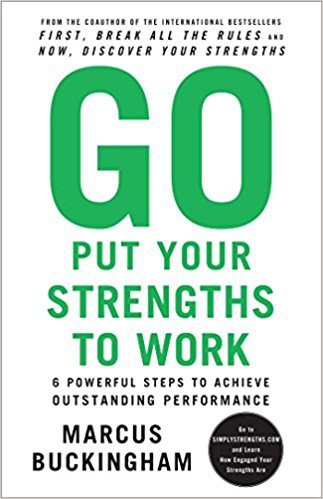The First Stage: How to Label
Its hard to trace the source of the strengths movement.
Some will identify Peter Drucker, citing his seminal 1966 book, The Effective Executive, in which he wrote: The effective executive builds on strengthstheir own strengths, the strengths of superiors, colleagues, subordinates; and on the strengths of the situation.
Some will cite a 1987 article that launched a new discipline called Appreciative Inquiry, whose basic premise, according to its founder, David Cooperrider, was to build organizations around what works rather than fix what doesnt.
Some will make reference to Dr. Martin Seligmans 1999 speech after becoming president of the American Psychological Association. The most important thing we learned was that psychology was half-baked, literally half-baked, he said. Weve baked the part about mental illness, about repair of damage. The other sides unbaked, the side of strength, the side of what were good at.
More recently, some might even point to the book I wrote with Donald Clifton for the Gallup organization, Now, Discover Your Strengths, which began with this optimistic statement of intent: We wrote this book to start a revolution, the strengths revolution.
Whatever its true source, the strengths movement is now in full flood. It is a wave of change that, over the last several years, has swept us all forward. No discipline has been left behind. Whether we work in business, government, education, or health care, this wave has lifted us up, spun us around, and revealed to us all a new world. You may not yet recognize the changesome of us were bowled over by the wave, while others barely noticed it carrying them along. But, with or without our knowledge, it has picked us up and deposited us far from where we were a decade ago. And theres no going back. This wave has forever changed the way we perceive ourselves, our employees, our students, and our children.
Look around you, and youll see clearly the signs of change.
Many of the worlds most successful organizations such as Wells Fargo, Intel, Best Buy, and Accenture have declared their commitment to becoming an explicitly strengths-based organization. All new managers at Toyota must now attend a three-day Great Manager training program that shows them how to spot the strengths of their subordinates. All new managers at Yahoo are required to take an online survey that measures their talents and pinpoints their strongest.
Look beyond business, and youll see nonprofit organizations such as the U.S. Coast Guard, the Baptist General Convention of Oklahoma, the American Society on Aging, and the New Zealand Ministry of Youth Development all installing similar strengths-based programs and initiatives.
Universities too have been swept up by the movement. Princeton, with great fanfare, recently set up its own Center for Health and Well-Being, dedicated to the study of all that is right in the world. Over half the faculty are, surprisingly, economists. At Harvard, Professor Tal David Ben-Shahars class An Introduction to Positive Psychology is now the most popular elective class in the entire curriculum. And Azusa Pacific University now has a Center for Strengths-Based Education, set up by the pioneering educator Edward Chip Anderson.
Look further still, and youll see more signs of the movements reach. If your child happens to break the law in Ingham County, Michigan, before his day in probate court, hell be asked to fill out a Strengths Assessment for Juvenile Justice, which will pose strengths-based questions such as Have you made any good changes in the past? How did you make these changes? and What is your first step to get out of this trouble? Who will be the first person to notice this step?
If you are a psychiatry student learning to work with patients suffering persistent mental disorders, you will be asked to read Charles Rapps 1997 classic, The Strengths Model, which shows you, case by case, how to amplify the well part of the patient.
If you are an aspiring soccer coach, Major League Soccer will be happy to sign you up for its Strengths-Based Coaching course. Here youll learn, among other things, how to hand out green cards, which draw a childs attention to a particularly good pass or tackle he made, rather than the traditionally punitive yellow and red cards.
Today the strengths movement is everywhere: the corporate world, the worlds of public service, of economics, of education, of faith, of charityit has affected them all. It has its detractors, of course, but an appeal as universal as this begs the question Why? Why do so many people from so many different worlds see such power in the strengths-based perspective?
Because it works better than any other perspective. The radical idea at the core of the strengths movement is that excellence is not the opposite of failure, and that, as such, you will learn little about excellence from studying failure. This seems like an obvious idea until you realize that, before the strengths movement began, virtually all business and academic inquiry was built on the opposite idea: namely, that a deep understanding of failure leads to an equally deep understanding of excellence. Thats why we studied unhappy customers to learn about the happy ones, employees weaknesses to learn how to make them excel, sickness to learn about health, divorce to learn about marriage, and sadness to learn about joy.
What has become evident in virtually every field of human endeavor is that failure and success are not opposites, they are merely different, and so they must be studied separately. Thus, for example, if you want to learn what you should not do after an environmental disaster, Chernobyl will be instructive. But if you want to learn what you should do, Chernobyl is a waste. Only successful cleanups, such as at the Rocky Flats nuclear facility in Colorado, can tell you what excellence looks like.
Study unproductive teams, and you soon discover that the teammates argue a lot. Study successful teams, and you learn that they argue just as much. To find the secrets to a great team, you have to investigate the successful ones and figure out what is going on in the space between the arguments.
Focus your research on people who contract HIV and die, and you gain some useful insights about how the disease wrecks the bodys immune system. But focus your research on those few people with HIV who are relatively unaffected by the disease, and you learn something else entirely: namely, how the body fights back.

